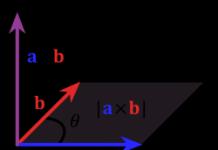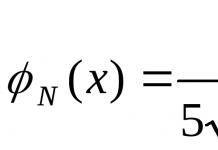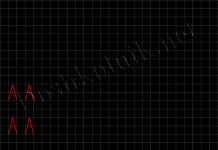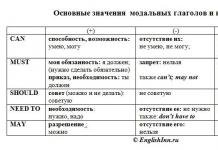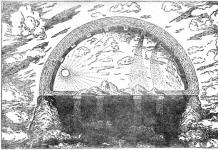Attempts to explain the movements of the planets were made by various scientists. However, it was Robert Hooke (see Fig. 2) who managed to compare the movement of the planets with the acting forces. He guessed that the Sun attracts all the planets to itself, that the movement of the planets is ensured precisely by the Sun.

Rice. 2. Robert Hooke (1635-1703) ()
The next step in studying the motion of planets was made by Newton (see Fig. 3), who considered the direction of the force in the direction of acceleration (if we look in the direction of acceleration of the planets, we will see the Sun). Newton was the first to calculate the direction and trajectory of the planets. Because the measurements were inaccurate, he did not publish his results. This led to the fact that between two scientists, Robert Hooke and Newton, a dispute continued for a very long time about the priority of the discovery of the movement of planets around the Sun and, most importantly, about universal gravitation. After all, it was Hooke who first published a work in 1674, in which he argued that not only the planets and the Sun interact with each other, but also the planets with each other. As the story goes, Newton guessed about such an interaction back in 1666, but for the reasons stated above, he did not publish his conclusions.

Rice. 3. Isaac Newton (1642-1727) ()
The forces of interaction between the planets and between the planets and the Sun began to be called gravitational, which translated from Latin means “gravity”.
The interaction characteristic of all bodies of the Universe and manifested in their mutual attraction to each other is called gravitational, and the phenomenon itself - phenomenon of universal gravitation, or gravitation.
It can be said that Isaac Newton in his work, which he published in 1698, showed very clearly that there is interaction between the planets. This interaction is carried out by a special field, which began to be called gravitational. This field has some special features. The most important and most interesting feature is that the field is all-pervasive. The fact is that you can protect yourself from the electric field and the magnetic field; it is possible to put a barrier to the action of this field. But it is impossible to protect yourself from the gravitational field. That is, every time we place a barrier in the path of the gravitational field, we feel the action of this field behind this barrier.
Gravitational interaction depends on the mass of the body. Moreover, the greater the mass, the more intense the gravitational interaction will be.
Newton also derived two relationships. All bodies that are near the surface of the Earth are attracted to it with the acceleration of free fall. Comparing this acceleration with the acceleration of the Moon relative to the Earth, Newton noticed that the acceleration of gravity was 3600 times greater. At the same time, the distance from the center of the Earth to the Moon and the radius of the Earth differ by a factor of 60 (see Fig. 4). That is, acceleration is inversely proportional to the square of the distance. This relationship led to the discovery of the law of universal gravitation, which will be discussed in the next lesson.

Rice. 4. Ratio of the distance from the center of the Earth to the Moon to the radius of the Earth
It should be noted that when deducing the law of universal gravitation, Newton used data from the discoveries of many other scientists.
Bibliography
- G.Ya. Myakishev, B.B. Bukhovtsev, N.N. Sotsky. Physics 10. - M.: Education, 2008.
- Kasyanov V.A. Physics 10. - M.: Bustard, 2000.
- A.V. Peryshkin, E.M. Gutnik. Physics 9. - M. Bustard 2009.
Homework
- Questions (1-3) at the end of paragraph 15 (p. 61) - A.V. Peryshkin, E.M. Gutnik. Physics 9 (see list of recommended readings) ()
- What interaction is called gravitational?
- What properties does the gravitational field have?
- Internet portal Origins.org.ua ( ).
- Internet portal Ru-an.info ().
- Internet portal Rnbo.khb.ru ().
Simple mechanisms. Periodiche movement. Gravity The answers to the tasks are a word, phrase, number or sequence of words, numbers. Write your answer without spaces, commas or other additional characters. 1 A string pendulum performs harmonic oscillations. With an increase in the mass of the pendulum's load by 4 times, the period of oscillation 1 1) increased by 2 times 2) increased by 4 times 3) decreased by 2 times 4) did not change 2 The lever is in equilibrium under the influence of two forces. Force F1 = 12 N. The length of the lever is 50 cm, the arm of force F1 is 30 cm. What is the force F2? 2 1) 0.2 H 2) 7.2 H 3) 18 H 4) 24 H 3 A body freely falls from rest near the surface of a planet. The figure shows the distances traveled by a body in successive equal intervals of time. What is the distance S 2 if the acceleration of gravity on the planet is 6 3 m/s2? Atmospheric resistance can be neglected. 1) 3 m 2) 6 m 3) 9 m 4) 12 m 4 A stone thrown vertically upward from the surface of the earth reaches its maximum height and returns back. Which of the graphs corresponds to the dependence of the velocity modulus on time during the upward movement of the stone? 4 1) ID_2871 1/4 neznaika.pro 2) 3) 4) 5 A stone thrown vertically upward from the surface of the earth reaches its maximum height and returns back. Which of the graphs corresponds to the dependence of the velocity modulus on time during the downward movement of the stone? 5 1) 2) 3) 4) 6 For a body freely falling from a state of rest near the surface of a planet, the distances traveled by the body in successive equal intervals of time were measured (see figure). What is the acceleration of gravity on the planet if S 2 = 30 m? Atmospheric resistance is negligible. 6 1) 5 m/s2 2) 10 m/s2 ID_2871 2/4 neznaika.pro 3) 20 m/s2 4) 40 m/s2 7 A sound wave passes from water to air. How do the frequency and speed of sound change? 7 1) frequency does not change, speed increases 2) frequency does not change, speed decreases 3) frequency increases, speed does not change 4) frequency decreases, speed does not change 8 Compare the sound volume and pitch of two sound waves emitted by tuning forks, if for the first wave amplitude A1 = 1 mm, frequency ν1 = 600 Hz, for the second wave amplitude A2 = 2 mm, frequency ν2 = 300 Hz. 8 1) the volume of the first sound is greater than the second, and the pitch is less 2) both the volume and the pitch of the first sound are greater than the second 3) the volume and pitch of the first sound are less than the second 4) the volume of the first sound is less than second, and the pitch is greater than 9 9 If you use a stationary block, then 1) you can get a gain only in strength 2) you can get a gain only in work 3) you can get a gain in both strength and work 4) you can’t get a gain in either strength , nor in work 10 The body moves uniformly in a circle counterclockwise. Which vector corresponds to the direction of the velocity vector at point A? 10 1) 1 2) 2 3) 3 4) 4 ID_2871 3/4 neznaika.pro Answers 1 4 2 3 3 3 4 1 5 2 6 3 7 2 8 4 9 4 A fixed block as an equal-armed lever does not provide a gain in strength. Gain in work does not come from any of the simple mechanisms. 10 4 Please write about any inaccuracies by email (indicating the topic and wording of the assignment): [email protected]





